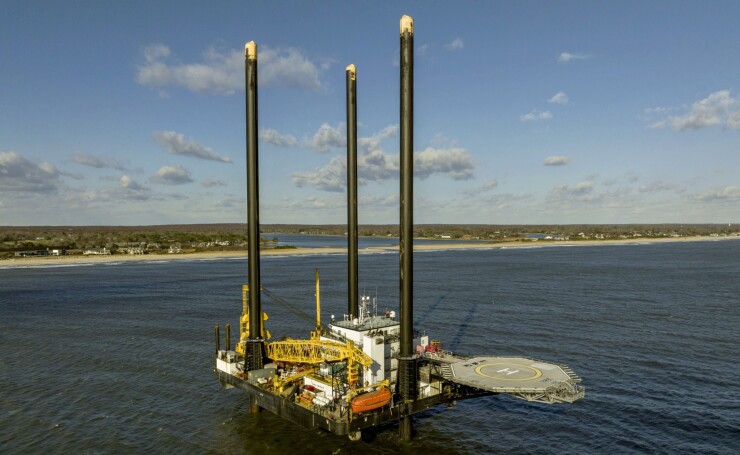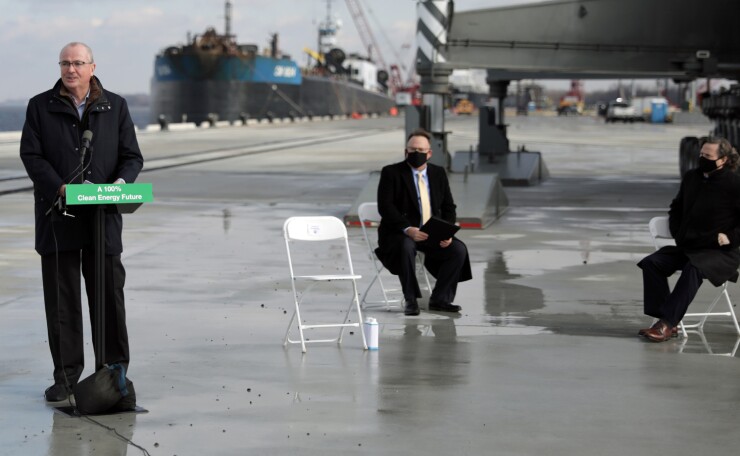Two major offshore wind projects in New Jersey got the ax as their developer, Danish energy company Ørsted, reassesses its U.S. portfolio citing sustained inflation and rising construction costs.
Mads Nipper, Group President and CEO of Ørsted, on Tuesday
"Macroeconomic factors have changed dramatically over a short period of time, with high inflation, rising interest rates, and supply chain bottlenecks impacting our long-term capital investments," David Hardy, Group EVP and CEO Americas at Ørsted, said

Ocean Wind 1 and 2 were flagship projects for both Ørsted, who hoped for a grand entrance into the U.S. offshore wind energy market, and New Jersey Gov. Phil Murphy, whose ambitious green energy plan calls for 50% renewable energy use by 2030 and a 10% clean energy economy by 2050.
The cancellation of both projects was "outrageous," and calls into question "the company's credibility and competence," Murphy said.
"As recently as several weeks ago, the company made public statements regarding the viability and progress of the Ocean Wind 1 project," he said. "Ultimately, as we have seen in other states recently, offshore wind projects awarded prior to 2020 have been impacted by a combination of interest rate escalation, supply chain cost increases, and inflation.
"And while today is a setback, the future of offshore wind in New Jersey remains strong. In recent weeks we've seen a historically high number of bids into New Jersey's ongoing third offshore wind solicitation," he said.
The plans for Ocean Wind 1 called for an array of 98 turbines 15 miles off the coast of southern New Jersey that would have provided 1,100 megawatts of clean energy. The project would have cost $1.6 billion to complete and Ørsted had previously said it was eyeing a fall start to construction.
Ocean Wind 2 would have also been off the coast of southern New Jersey and provided 1,148 megawatts of clean energy with a construction start date set for 2028.
The pair of projects had garnered strong support from state Democrats and Murphy's administration, which took charge in negotiating large incentive packages to back the speedy development of Ocean Wind 1.
Murphy's administration and Ørsted signed a contract for the project in April 2022,
The New Jersey Economic Development Authority sold $160 million of taxable green wind energy bonds in January to support the development of an offshore wind port on the Delaware River in southern New Jersey to serve as a launching and monitoring point for offshore wind energy projects and a manufacturing site for turbine components.
Ørsted's announcement also follows Ocean Wind 1's approval for additional aid this summer after a measure redirecting federal renewable energy tax credits, expected to provide an estimated $1 billion in tax breaks, narrowly passed the state legislature along party lines without the support of minority statehouse Republicans.
The company received a federal
Escaping the ax is another big Ørsted project in New England.
The company, also on Tuesday, said it made a final investment decision
That project is buoyed by Connecticut state support for the
The company's Danish headquarters

Murphy said in his statement that his administration and state legislators had insisted upon protections for the project that would ensure "New Jersey will receive $300 million to support the offshore wind sector should Ørsted's New Jersey projects fail to proceed."
Murphy, in his announcement, said he directed his office to "review all legal rights and remedies and to take all necessary steps to ensure that Ørsted fully and immediately honors its obligations."
Adie Tomer, senior research associate and associate fellow at Brookings, said major construction-related cost increases and inflation "are real right now" and forcing some developers to take stock of new and ongoing projects as "construction-related cost inflation is significantly higher than consumer-driven measures."
Those concerns are evident in offshore public-private-partnership development, like those used to develop Ocean Wind 1 and 2, where it's the private sector that "really has skin in the game."
"All of those contracts are always under review," Tomer said.
"Companies doing this construction are ideally doing it soup to nuts — design, build, and then operate on some level. They need each project to pencil out," he said.
"This one really reverberated," Tomer said. "It becomes another ringing sound for both the folks on the Hill and the regulators, to say nothing of their peers at the state level. So, if we do not get these upward pressures on cost, including if not leading with permanent, right, we are not going to deliver the speed of kind of clean economy transition that we want."





